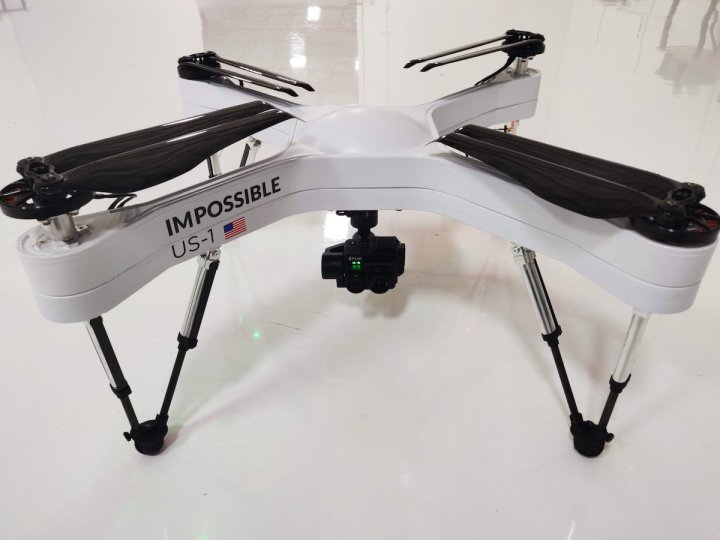
Dubbed by its creator as “the flying battery” for a unique design that literally envelops its power source, the US-1 quadcopter turned many heads when it made its debut in September 2018.
The drone, built by California-based Impossible Aerospace, was recently deployed for the first time by a SWAT team in Campbell, California, during a stand-off situation involving an armed suspect holed up inside a Denny’s restaurant.
Able to stay in the air for an impressive 120 minutes on a single charge (compare that to the 30 minutes you get with the Mavic Pro 2), the US-1 gave the SWAT team a real-time and persistent aerial view of the perimeter, roof, and exits of the building.
The drone was able to fly close to the restaurant and offer an ongoing perimeter scan and more consistent video footage than a police helicopter could have provided, and for a fraction of the cost, too.
At one point, live footage from the drone’s thermal and optical cameras revealed that tear gas, which had been used in a bid to force the suspect from the building, was leaking from a kitchen vent, prompting the SWAT team to adjust its tactics.
The suspect was eventually arrested some 12 hours after the incident began.
“Real-time intelligence is extremely important”
“During critical incidents, real-time intelligence is extremely important,” local police captain Gary Berg said in a release. “At this recent event involving a barricaded subject with a gun, Impossible Aerospace provided a piece of intelligence that our agency previously has never had access to.”
Berg added: “The use of the US-1 drone helped us optimize the safety of our officers and the community while providing valuable information to the command post through the live video feed.”
Unusual design
The US-1 quadcopter, which is essentially a battery with propellers, features a 26-inch frame and was designed by engineers who once worked at such companies as Tesla and SpaceX.
The battery-first approach was central to the development of the $7,500 drone, with Impossible Aerospace CEO Spencer Gore essentially building the aircraft around its power source.

The downsides are that you can’t swap out the battery, meaning you’d need at least two of these drones if you need to fly for longer than a couple of hours in one session. With a regular drone, you could land it and quickly swap out the battery before sending it skyward again, or have several flying in relay for uninterrupted coverage of a scene. This may be a more appealing option if cost is important.
Other options for long, uninterrupted drone flights include gasoline-powered machines, or one with a cable attached to a power source on the ground.
Crime-fighting drones
A growing number of police departments in the U.S. and beyond are incorporating drones into their crime-fighting kit. The flying machines can be used in a range of scenarios that include crowd surveillance, search-and-rescue missions, hostage situations, hazardous material incidents, and crime scene investigations where the location is hard to access.
But some privacy groups have expressed concern about how the gathered drone footage is used or stored. The New York Civil Liberties Union (NYCLU), for example, recently questioned the NYPD’s use of the technology, claiming that there are “no meaningful restrictions on police deployment of drones, paving the way for the NYPD to build a permanent archive of any behavior visible from the sky.”
The NYCLU added that while there are “legitimate reasons why the NYPD may need to use high-tech equipment like drones to protect our city … law enforcement needs must always be balanced with the privacy rights” of the local community.


